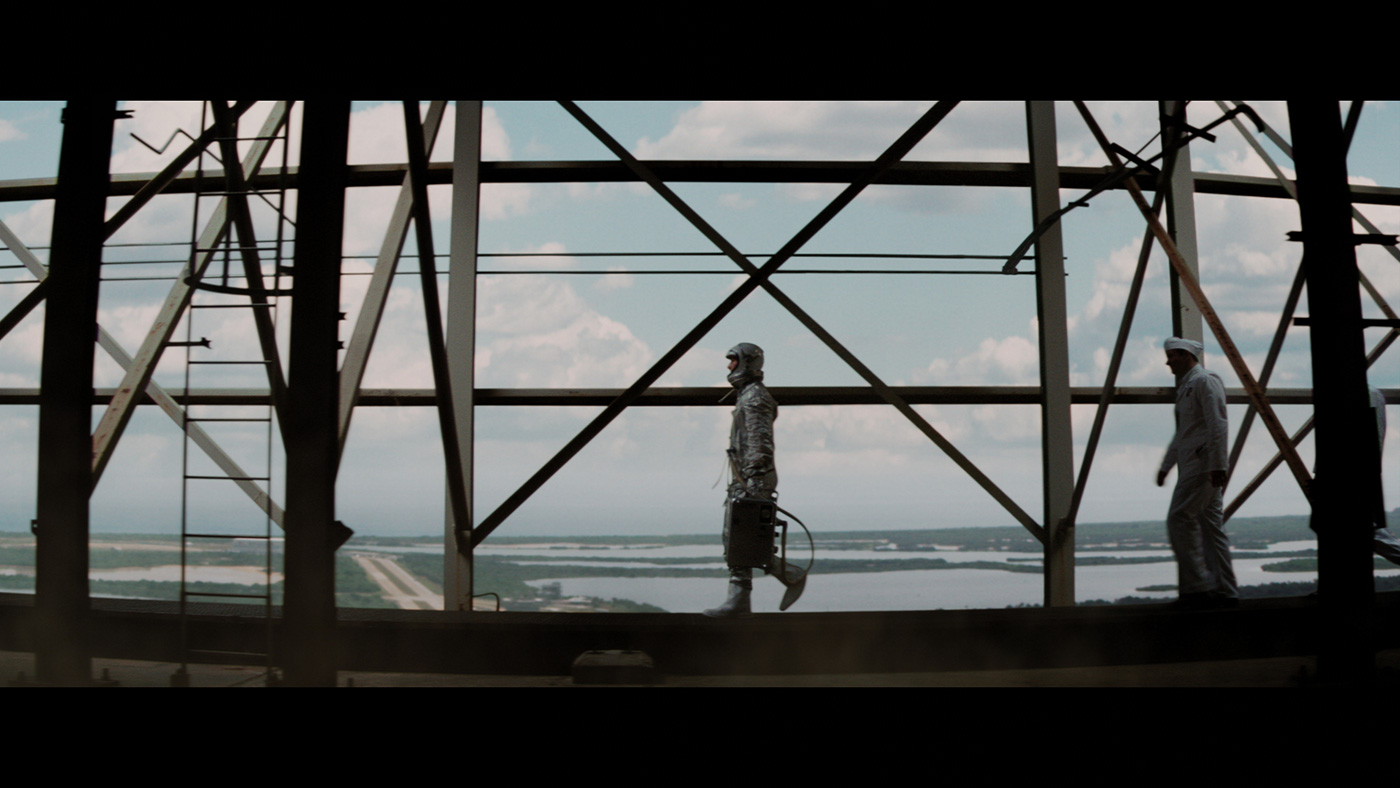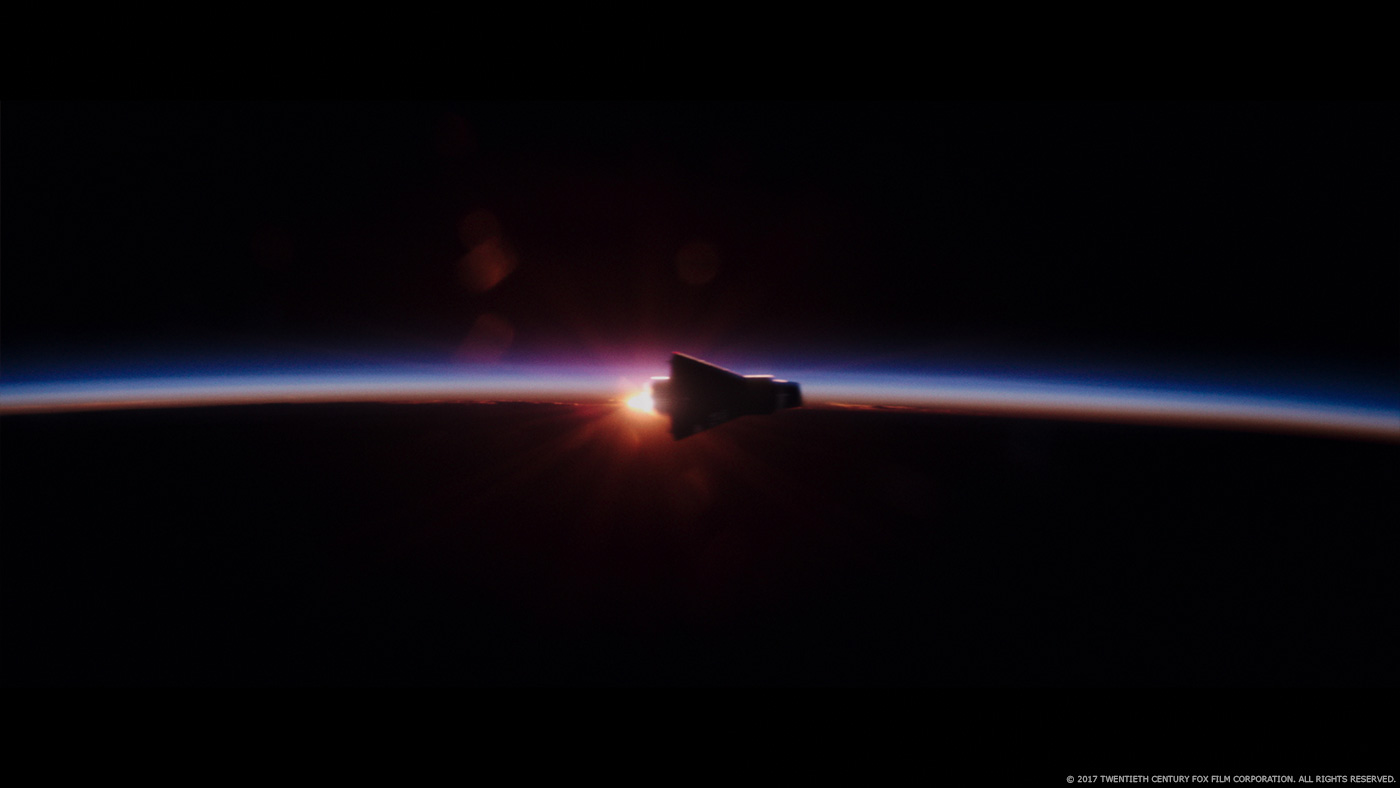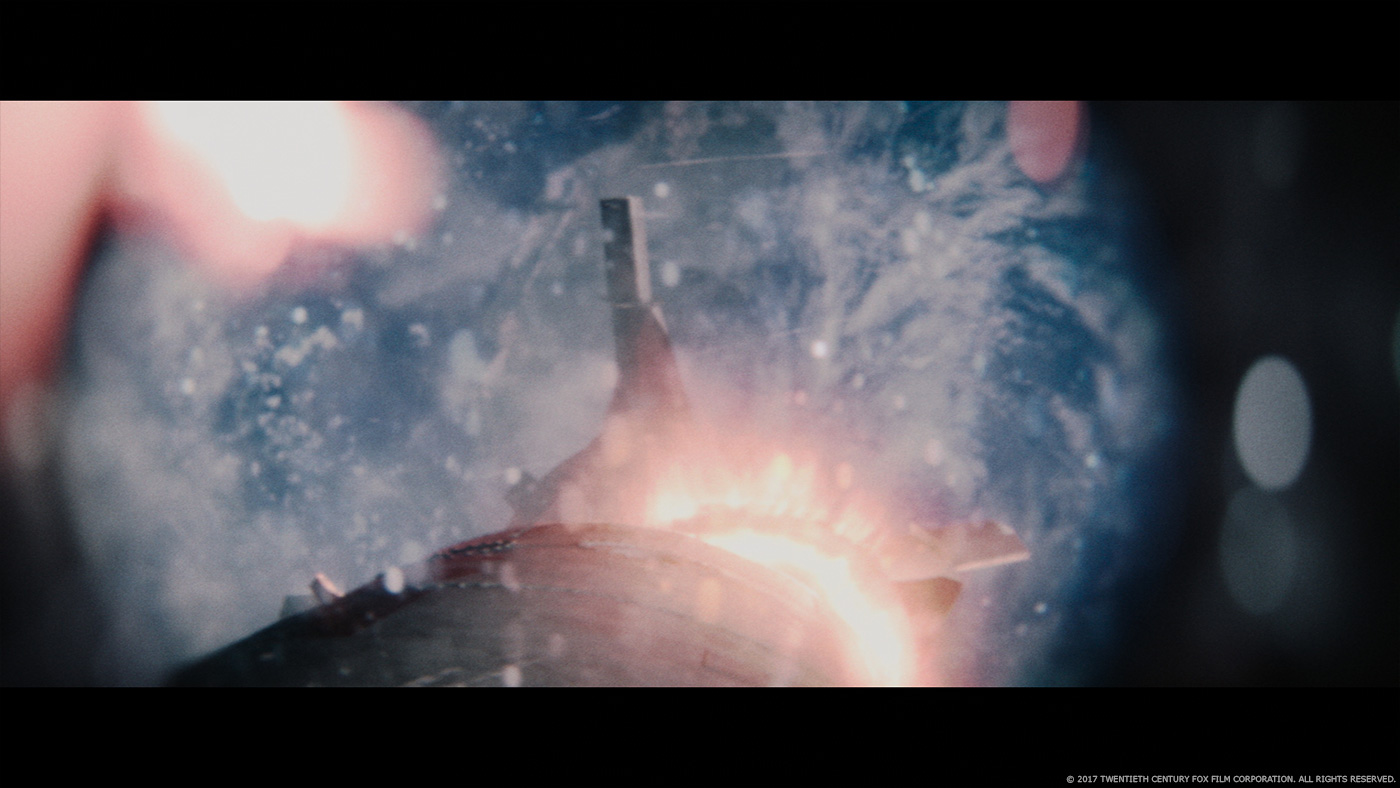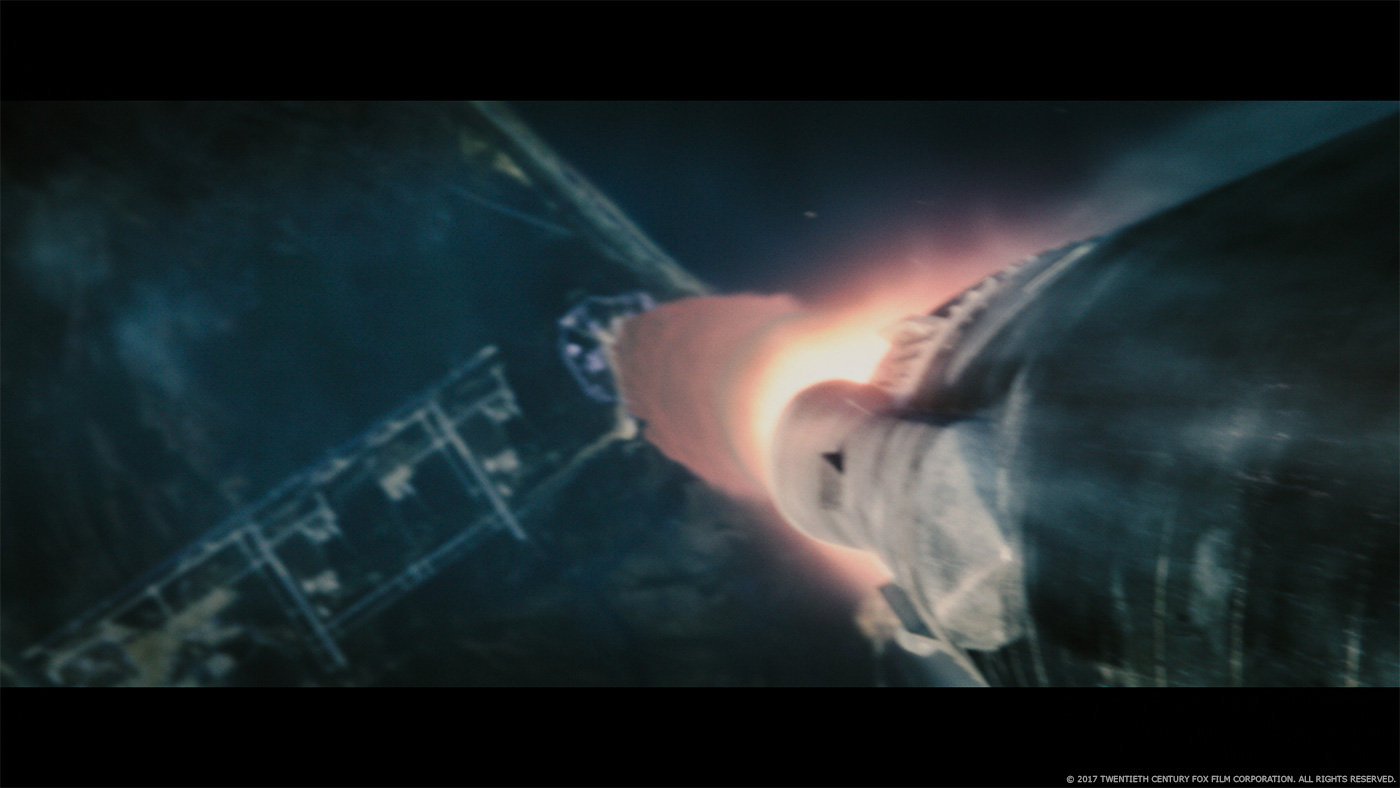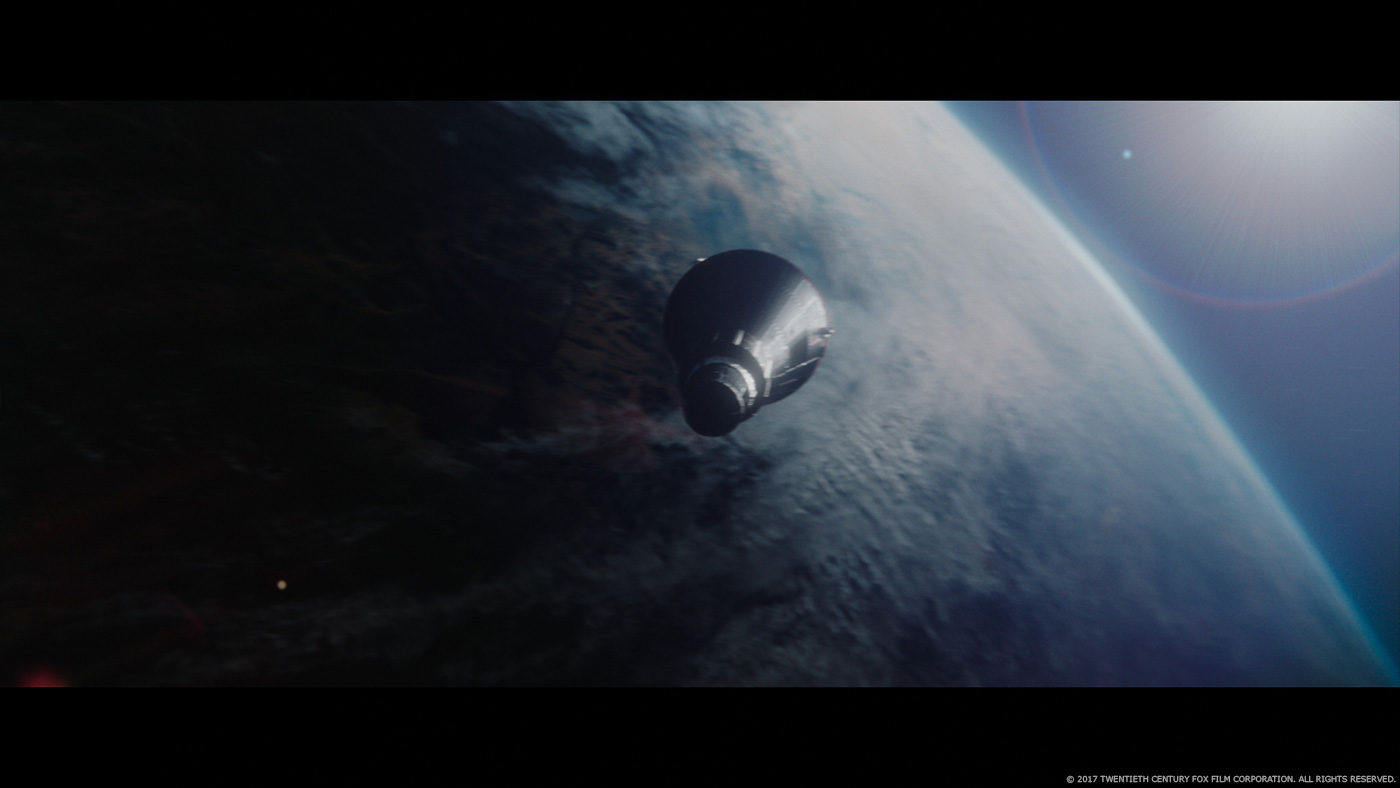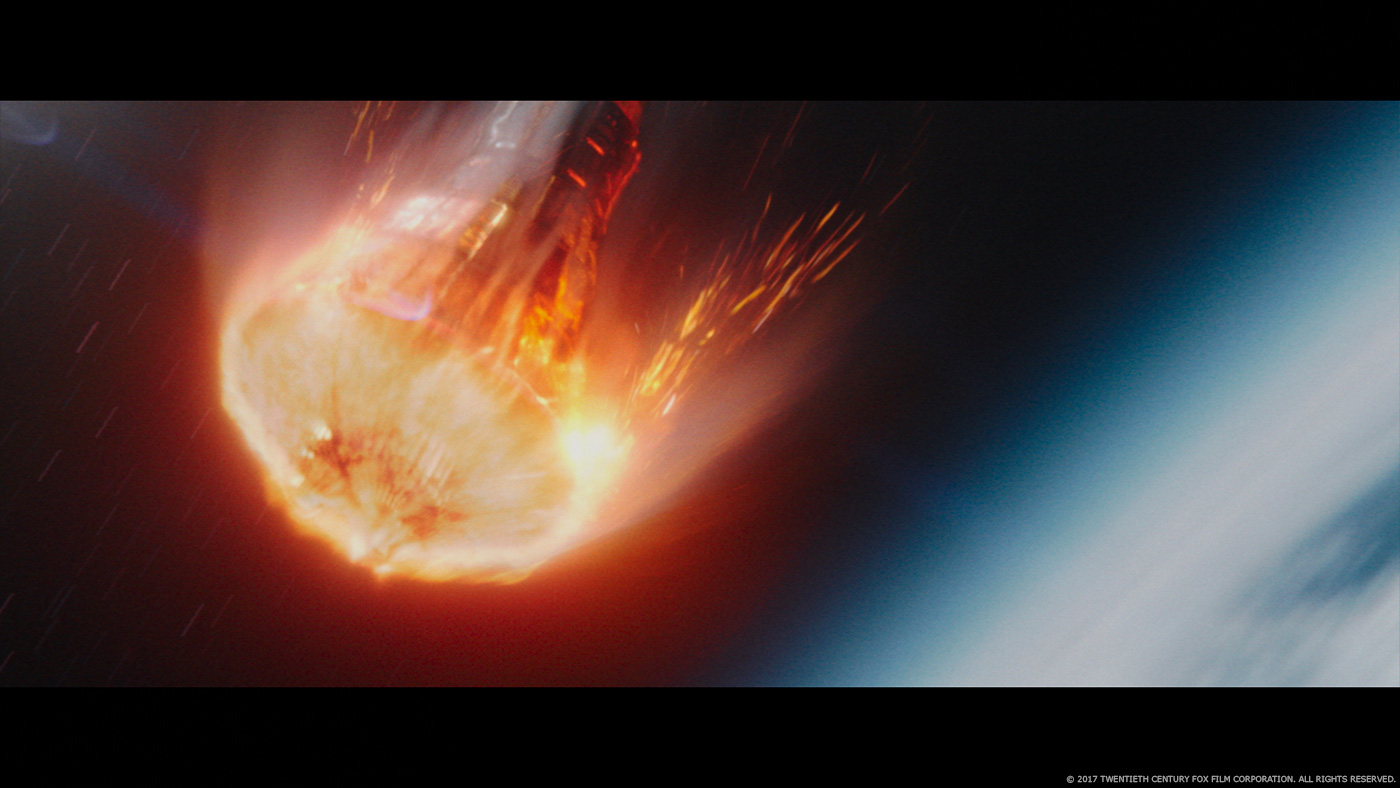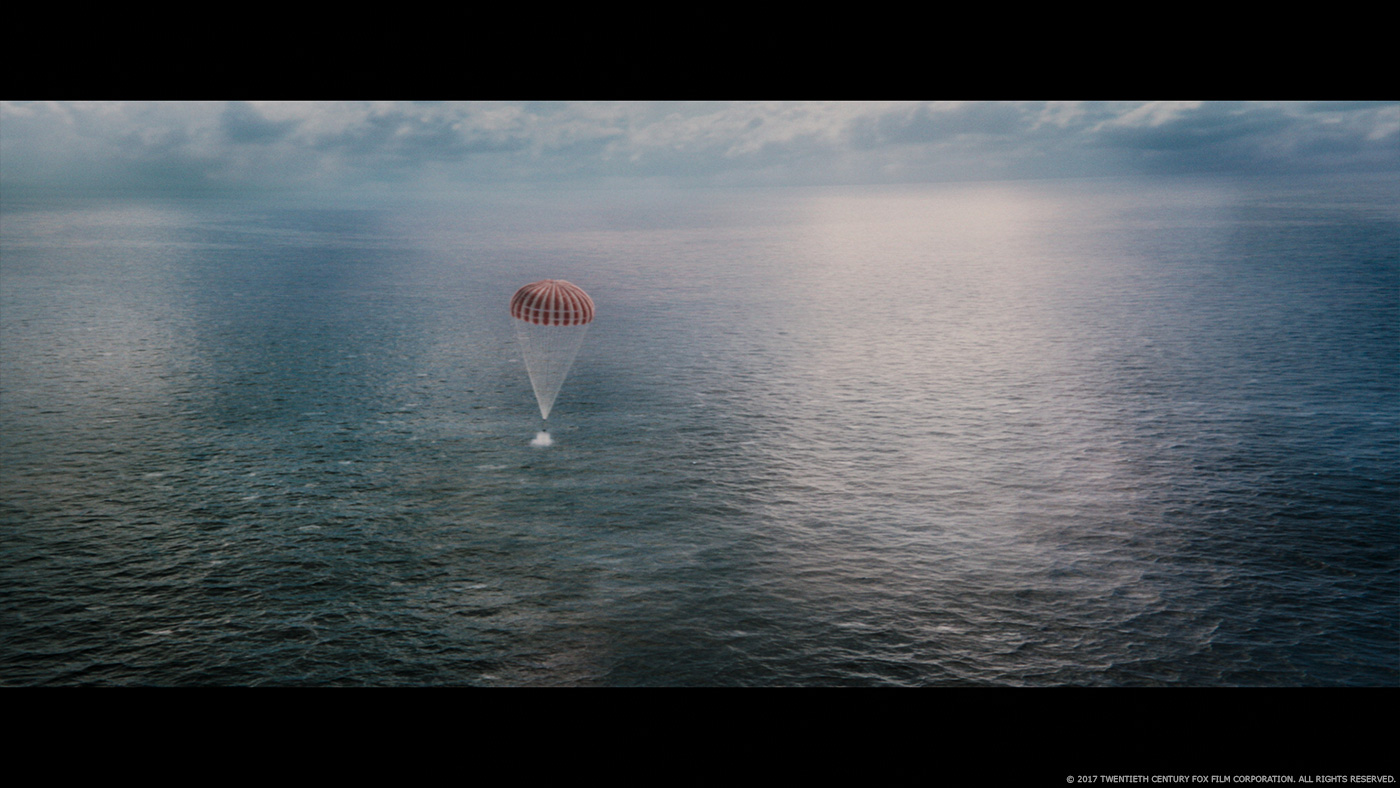Chris LeDoux began his career in visual effects as a compositor at The Orphanage in 2004. He then worked in numerous studios such as Uncharted Territory, Café FX or Scanline. In 2011, he founded Crafty Apes with his brother Tim LeDoux and Jason Sanford. He has taken care of the effects of many films such as AVENGERS: AGE OF ULTRON, DOCTOR STRANGE and LA LA LAND.
What is your background?
I started working in production up in Alaska in the year 2000. I was about to graduate from the University of Alaska-Fairbanks , when I figured out a way to get a job doing editorial work. Cinema production had always been my passion, but it had always seemed out of reach growing up in such a remote area (which was foolish). A chance discussion with someone made me realize that there were opportunities out there worth chasing, so I went for it and landed a job in editorial at a small ad agency. I was able to write, shoot, edit, and do things that somewhat resembled VFX within a short time. This led to me meeting a fellow Alaskan named Ben Grossmann who was on the verge of starting his storied VFX career in Hollywood. He moved to LA, but we kept in touch and I started doing production full time in Fairbanks, Alaska. One day in 2004, he rang me up and asked if I wanted to work as a compositor on a movie called SIN CITY at The Orphanage in San Francisco. I packed my bags and moved to San Francisco that fall with little idea of what a professional compositor did. I soon discovered I knew next to nothing, and was barely qualified to clean the keyboards of most compositors. However, the Orphanage was a great learning environment with some of the best artists and people I’ve ever met, and they took me under their wing. After a few months of sleeping on the work couch and studying everyone’s comps, I was able to resemble something you might call a compositor. After doing a couple shows there, I took the plunge into Los Angeles in 2005. I was lucky enough to work with many incredible companies at teams over the years at Uncharted Territory, Café FX, R!OT, and finally Scanline. Gradually my skills increased and I went from compositor to comp supe, and then to VFX Supe. In 2011, with Tim LeDoux and Jason Sanford, we branched out on our own and we created Crafty Apes. From there it’s been a gradual build, and in 2014 I moved to Atlanta to launch our division out here.
How did you and Crafty Apes get involved on this show?
I had just finished filming the movie FIST FIGHT when I was talking to our travel coordinator in passing, and she mentioned she was moving onto a promising movie called HIDDEN FIGURES that was coming to town. I went onto IMDb to see who was behind it, and it turned out I had finished a film the year before for one of the producers. I also saw a synopsis online, and decided I really wanted to be a part of it. A few phone calls and weeks later, I was in an office meeting with Gary Marcus, the 1st AD, Kevin Halloran the Executive Producer, and Ted Melfi the director. Luckily, they seemed to enjoy my company, and they connected me to Christina Garberson at FOX who was the executive in charge of visual effects on the film. She was fantastic, and thought we were a good fit, so soon after they offered the VFX work to us.
How was this collaboration with director Theodore Melfi?
It was wonderful from start to finish, and that is no BS. He is clear with his vision, but is completely open to ideas on everything so it was a great collaboration. He would text me at all hours with ideas, and I would reciprocate. It was a blast, much like a coach you want to play for. Along the way, and at the end of it all he was truly grateful and he expressed that. The sincerity on his part really inspired me and the artists, and I think that comes out in the work. He drew the rules of the creative sandbox so to speak, and let us explore all sorts of solutions. In the end, almost all of the shot design is exactly what we suggested creatively, and that is fulfilling.
What was his approach and expectations about the visual effects?
He would constantly ask me what was possible. As with every project there are budget constraints so I always asked him to tell me his greatest vision as if money was no object. Then we would figure out how to make that work given our parameters. Figuring out how to skirt parameters is really the problem solving that is the most entertaining part of VFX. When someone wants something that should cost you a first born child, but you figure out how to achieve their vision with glue and toothpicks, that is a satisfying emotional state. Once Ted saw what was possible with various scenes, he pushed everything further which really made a positive difference in the visual scope of the film. I’ll end up repeating myself, but he really left us to our own devices to do what we were good at.
How did you organize the work with your brothers?
Because of the Georgia film credit, almost all of the work was performed out of our Atlanta office, but not all. Me and my brother Mark LeDoux headed up the overall visual effects on the film from here in Atlanta. I oversaw everything as a supervisor and producer, and Mark was the officer in the foxhole overseeing the artists more directly and screening everything before it got to me. However, Tim LeDoux in the LA office really helped take everything to another level. He would concept out many of the hero shots which really helped give the most visually enticing shots their final look. It was a good team effort.
How did you split the work between your LA and Atlanta offices?
Atlanta did almost all of it. LA did a handful of shots, but was in more of a support role on this one. We outsourced work in small chunks to houses around the world for different tasks as well.
What references and indications did you received for the take-offs and space shots?
We dug through a ton of stock footage. We watched documentaries about the Mercury Program. We read launch papers and debated how the orbits really worked. Production made a really smart call, and they hired a guy named Tommy Melvin to spend every day gathering footage and doing research. The biggest thing he did for us is he was able acquire Raw Red Footage shot at 6K from the International Space Station. We used this as reference, and even as elements for matte paintings. Me and Mark now know more about the Mercury Program than our brains can contain. There was endless research done into these topics which was pretty entertaining.
Can you explain in detail about the creation of these shots?
Sure, these were the most difficult shots in the show, and needed the most attention as you can imagine. The schedule was compressed and our shot count had greatly increased from initial projections when it came to the CG work so we needed to be clever with how we got it done. The budget did not exactly slide 1:1 with that shot count, so we had to get clever in our approach to getting these done within the deadline. Luckily, we had some friends and favors to lean on. To lead up the in house work, we brought in our old friend Dirk Valk to head up the CG and analyze what we could do in house, and what should be sent out.
After determining what we could do in house, my first outside call was to ILP out of Sweden. They are one of my favorite teams to work with and truly one of the best in the world. They were able to take on the creation of many of the hero CG assets that they sent to us for final comp and approval. My next call was to Anthony Vu, whom I’ve known for a long time and really pulled off some fantastic asset creation that we were able to use in house. Another friend I called was Rif Dagher who is a genius at smoke, fire, and fluids of any sort. His work really shone in the John Glenn re-entry sequence among others.
We did all of the comps in house, and were constantly managing and receiving assets and passes from around the world at all hours. Other CG artists that we called on to assist were Elliot Jobe, Brandon Young, and Andy Byrne who are my go to ninjas when the game is on the line. It was a 24/7 job to keep track of it all. What was great from a creative standpoint is how Ted allowed us to design many of these sequences based on our interpretation of the edit. The editor Peter Teschner and his 1st assistant Craig Hayes were instrumental in helping us shape what the real emotional thrust of these shots would be, and it was a very positive collaboration that I would do again in a heartbeat.
How did you create the various FX such as the ocean, fire and smoke?
These were created in Fume, Phoenix, and Maya for the most part. We are very comp-centric, so everything would also get additional 2D elements in comp.
What was the main challenge about these shots and how did you achieve it?
The main challenge was really getting them to look and feel like they fit in with the rest of the film. It took a while for us to get anywhere near happy with them. Visually, the film was taking on a Kodachrome look, and since it was shot with film it was important they felt like they were part of the same language that the rest of the film was speaking. We didn’t want things that screamed « I’m a visual effects shot » whether that be by animation, color, lighting..ect. So as the edit progressed, we would adjust our shots to fit more with the practical shots around them so that they didn’t feel out of place when you are experiencing the story.
How did you recreated the Cape Canaveral launching pad and its environment?
This was one of my favorite parts to work on. For example, when we shot John Glenn walking to his launch pad, it was originally shot in a contained warehouse space. This didn’t reflect what had really happened, but the main issue was that it felt small from a scope perspective. Ted really wanted to open this up as it was an important story moment so he asked us to come up with a solution that wouldn’t break the budget. Our solution was simple, and so we called up Cape Canaveral and asked them if we could go film on location where the original launches had taken place. They agreed, and soon me and Mark took our RED camera and drove from Atlanta to Florida. They let us film at the proper sites, and then allowed us to shoot the whole area from their tallest building which was 500 feet up. We were then able to use all of this to create matte paintings of the environment, and the rest is all in comp. This really opened up a couple sequences and Ted was thrilled with the result. Sometimes, it’s that sort of simple solution that can be the most pleasing.
Can you explain in detail about the creation of the NASA HQ in Langley?
We had shot at an industrial building location for the main establishing shots of Langley, and the interiors of the campus were all shot at Morehouse College. For the main establishing exteriors we employed the services of Robot Rumpus to create a base CG matte painting, and we then augmented with cars, pavement, grass, trees, and everything else. They constructed it all in Nuke so we were able to manipulate it quickly in comp and apply it to other shots. Very little of the real plate is left in those shots except the actors in their cars. It’s an elegant before and after, and some of those shots had more time put into them than any other. For the interior of the campus we would generally augment with a building here and there, and a hero wind tunnel that played in a specific area. Morehouse was a great location for this, so there wasn’t as much to do here as on the exteriors, although many more shots in total.
How did you recreated the look of the old TV look?
We looked at footage of old scope tv’s from the era, and I mentally recalled my grandmothers television from years ago. Some experimentation with distortion, refresh, and scanlines, and after a pass or two, Ted signed off on the look for all of them.
Are there another invisible effects, you want to reveal to us?
One of the best shots is the older footage FORREST GUMP shot. Mark did a really great job on the face replacement comp where we placed our actors into stock footage, with JFK interacting with them. Those kind of shots are tricky as they are not ‘invisible’ in the traditional VFX sense, but if done correctly you really don’t notice them. Josh Stevens our set supervisor, did a fantastic job of directing the talent so they would fit in just right and feel natural. Much of the rain is all VFX work as well which came out great. There are some crowd extensions where there is some truly fantastic background acting done by various compositors that were shot in our office. In the wind tunnel, the giant fan in many of the shots is a comp, which turned out seamless. With 320+ shots total, there are all sort of knick knack shots throughout the film.
Was there a shot or a sequence that prevented you from sleep?
All of it really. The VFX kickoff got a little bit of a late start, and on top of that our shot count tripled from the initial projections. So less time, and more work led to my kids probably forgetting who I was for a couple months. We really didn’t get rolling until the end of July, and we had to be completely 2K finaled by the 3rd week of October so really there wasn’t any time for frivolous activities like sleep.
However, if I had to pick one, it would be any and all of the CG work. It was spread about between many different sequences so it wasn’t like you could just nail the look on a couple and the rest fell in line. Every sequence had its own look and issues so praying to the render gods became a normal ritual.
What do you keep from this experience?
Pride if anything. I’m proud of what we pulled off, but more so proud of the film. It’s always nice to be part of good cinema and be a component of a successful operation. Years later, I can show this to my kids, and say with a smile that I was able to contribute. Most films don’t embed themselves into the cultural consciousness, but I think this one will stick with people awhile.
How long have you worked on this film?
From my first phone call to the producer to my last final, it was about one year.
How many shots have you done?
~328 or so. I’m too tired to open up Shotgun right now.
What was the size of your team?
In house we had about 20 people.
What is your next project?
I oversaw the VFX on FIST FIGHT, which just came out this week, and I just finished a project for Jody Hill as well. I’m finishing a couple other studio films, but I’m not sure what I can mention there. There are two films upcoming whose scripts I’m really excited about also, but these NDA’s mean I can’t say anything. Maybe I’m too conservative there, but I haven’t been yelled at in that arena, nor do I intend to. I’m shooting a boxing commercial for HBO this weekend in LA, I know I can say that 🙂
What are the four movies that gave you the passion for cinema?
ONE FLEW OVER THE CUCKOO’S NEST, NETWORK, BARRY LYNDON, and THE GOONIES. For VFX though, it was that badass shot in SWORDFISH that I saw when I was in college. Everyone knows that shot.
A big thanks for your time.
// WANT TO KNOW MORE?
– Crafty Apes: Dedicated page about HIDDEN FIGURES on Crafty Apes website.
© Vincent Frei – The Art of VFX – 2017

